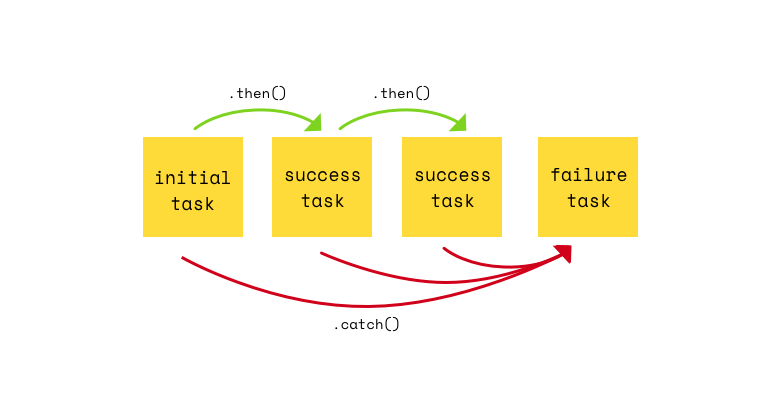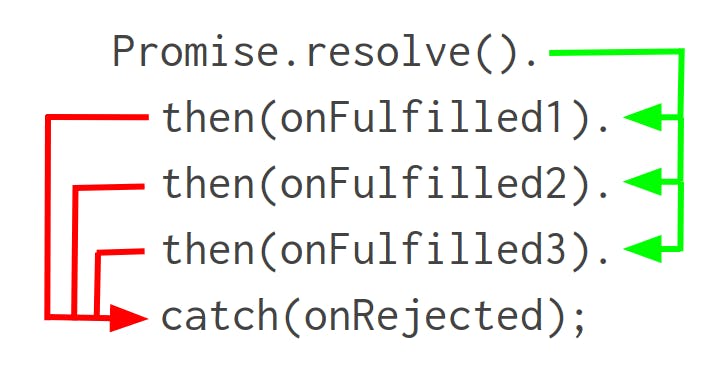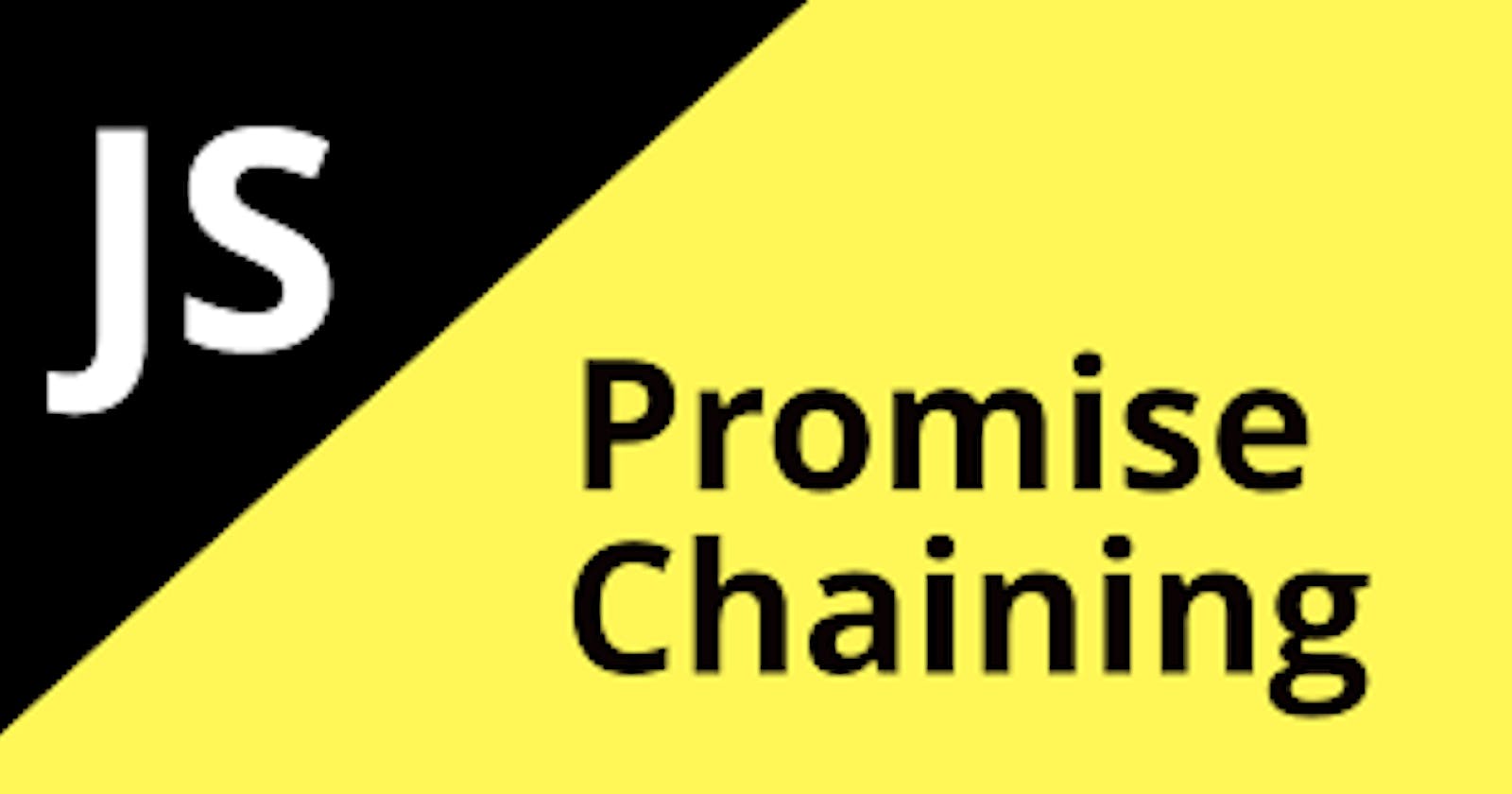Promise chaining is used for handling more than one asynchronous task one after the other.
What is Promise Chaining?
We use asynchronous functions which return promises and use resolve values with the help of .then. And that value we further use in another asynchronous function within another .then block and so on. At last, we give .catch block for handling errors. If there is any one error in any asynchronous function, it will be handled by the .catch block. This method of writing .then methods continuously one after another is known as 'promise chaining'.

Syntax
new Promise(function(resolve, reject) {
setTimeout(() => resolve(1), 1000); // This methods gives output after 1 sec
// Passes the resole value i.e. 1 to the .then method
}).then(function(result) { // (**)
alert(result); // 1
return result * 2; // resolved value 2 passes to the next .then
}).then(function(result) { // (***)
alert(result); // 2
return result * 2; // resolved value 4 passes to the next .then
}).then(function(result) {
alert(result); // 4
return result * 2;
}).catch(function()=>{
console.log("Some error occurred") // it doesn't call because there is no error
});
How does promise chaining work?
The initial promise resolves in a defined time, then the .then handler is called which in turn creates a new promise (resolved with another value). The next .then gets the result of the previous one and passes it to the next handler and so on.

Attaching multiple handlers to a promise
We can provide multiple handlers to a promise which handles promise one after the another in a sequence. The handlers will get the value once the promise gets fulfilled. For better understanding lets take an example.
let p1 = new Promise((resolve, reject) => {
// alert("Hey I am not resolved")
setTimeout(() => {
resolve(15);
}, 5000)
})
// This handler will be called first
p1.then((value) => {
console.log(`first handler with value ${value}`);
})
// This handler will be called second
p1.then((value) => {
console.log(`second handler with value ${value}`);
})
// This handler will be called third
p1.then((value) => {
console.log(`thirdhandler with value ${value}`);
})
Output

